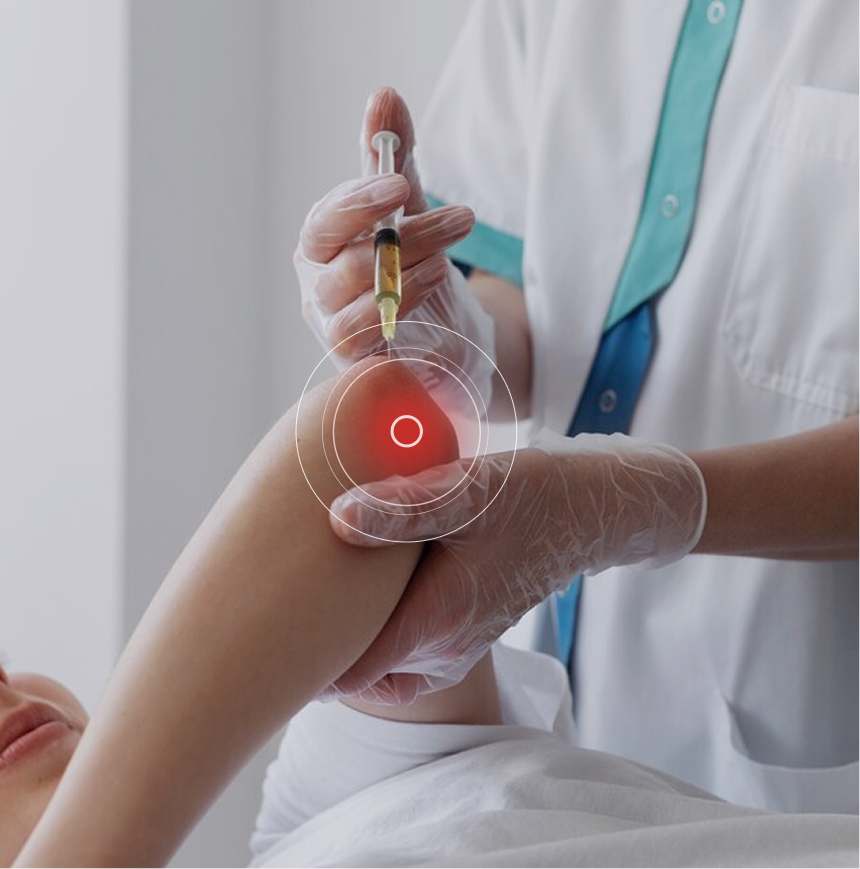Lateral epicondylitis – commonly known as tennis elbow – is an overuse injury affecting the tendons that attach your forearm muscles to your elbow. While it gets its popular name from tennis injuries, lateral epicondylitis can arise from a variety of activities that exert repetitive force on the forearm and outer elbow. If left untreated, tennis elbow can be painful and slow to heal, often persisting for months on end. Today, advanced regenerative technologies, orthobiologics and innovative therapies are revolutionizing the way tennis elbow is diagnosed and treated, reducing recovery time from months to just a handful of treatment sessions.
NYDNRehab stays on the cutting edge of rehabilitative medicine by embracing the latest evidence-based methodologies and making them available to our patients. Our integrative patient-centric approach combines highly skilled diagnostics with advanced technologies, for a speedy restoration of pain-free elbow function without drugs or surgery.
Dr. Lev Kalika, DC clinical director of NYDNRehab, is an internationally recognized expert in diagnostic and musculoskeletal ultrasonography, with multiple research papers to his credit. Dr. Kalika has studied with some of the world’s most prestigious experts in diagnostic, fascia, and nerve ultrasonography, and has presented his research at multiple international conferences.
Dr. Kalika is an active member of the American Institute of Ultrasound in Medicine (AIUM), and has developed his own unique approach to Dynamic Functional and Fascial Ultrasonography.

Orthobiologic specialist
Dr. Yuri Brosgol, MD is a neurologist with 20+ years of experience in treating pediatric and adult myofascial pain. Dr. Brosgol is an expert in ultrasound guided prolotherapy, having studied directly under Dr. Stephen Cavallino, a leading Prolotherapy expert and director of the European School of Prolotherapy.
Dr. Brosgol learned fascial hydro release methodology directly from Dr. Carla Stecco, the world’s leading specialist in fascial science. Dr. Brosgol has become a pioneer in the use of orthobiologic solutions, blazing the trail for transformative advancements in the treatment of myofascial disorders.
Together, Dr. Kalika and Dr. Brosgol are combining their skills to revolutionize the way musculoskeletal pain and injuries are treated. Dr. Kalika’s successful track record of diagnosing and rehabilitating musculoskeletal injuries, combined with Dr. Brosgol’s expertise in treating myofascial pain, makes NYDNRehab the clinic of choice for injury rehab in NYC.
The lateral epicondyle is the bony bump on the outside of the elbow where the tendons of the wrist and forearm muscles attach to the humerus bone. Tendons are tough collagenous structures that are continuous with their associated muscles. The extensor carpi radialis brevis (ECRB), the forearm muscle that extends the wrist, is most frequently involved in tennis elbow.
The condition is caused by repetitive wrist extension and supination (palm-up rotation) of the forearm that leads to microtears. The radial nerve and its branches are often affected, especially the posterior interosseous nerve (PIN) and the superficial radial nerve. Fascial restrictions in the forearm can increase pressure on the tendons and nerves, intensifying pain.
Multiple factors slow down the tendon healing process:

Biotensegrity refers to a physiological state where a system of individual components is held together under continuous elastic tension. In the human body, biotensegrity is created by the myofascial system, a complex network of muscles and fascia that exert elastic tension to control and guide movement, and to mediate outside forces. Biotensegrity is especially important in sports, where precise and efficient movement plays a key role in athletic performance.
Tennis elbow is a relatively common condition, and symptoms-based diagnosis can steer your elbow treatment in the wrong direction. Many other conditions mimic tennis elbow symptoms, and require different types of treatment. To get fast and effective results, it is important to work with a doctor who is able to differentiate lateral epicondylitis from its copycats.
Tennis elbow imposters include:
Identifying and treating underlying issues prior to beginning physical therapy is key to getting fast and effective results. Failure to pre-treat your tissues can completely undermine your treatment protocol, and in some cases, your condition may even worsen.
Obstacles to physical therapy success include:
At NYDNRehab, we use a combination of regenerative technologies, orthobiologics, and integrative therapies to restore tissue integrity before starting physical therapy. Our holistic treatment protocols are personalized, tailoring your recovery journey to your unique diagnostic results. Once we pre-treat your damaged tissues and eliminate compensation patterns, your body will be ready to begin physical therapy.
Tennis elbow is mostly a repetitive overuse injury, and symptoms often arise without warning. In addition to racquet sports, people in many occupations are prone to lateral epicondylitis, such as construction workers, cooks and chefs, mechanics, hairdressers, dentists, musicians, and many more.
Follow these guidelines to avoid lateral epicondylitis: